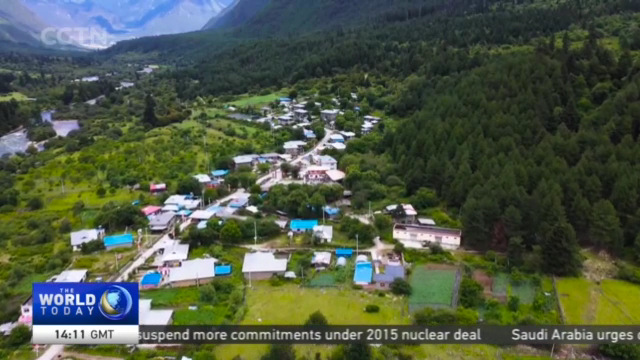
10:39, 16-Sep-2019
China's Development: Tibet's Autonomous Region's progress
Updated
10:50, 16-Sep-2019

It's a geographical and cultural marvel - that attracts tourists from all over. Tibet has been changing radically and China's State Council Information Office recently promoted the transformation. CGTN's Lu Sirui has more .
Often nicknamed "the roof of the world," Tibet towers over the rest of Asia, with an average elevation of over 4 thousand meters.
Before Communist Party of China took it over, Tibet's people were mostly theocratic feudal serfs whose economy lagged far behind the rest of the country.
Since 1949, the local GDP has soared, reaching 147 billion RMB in 2018, 191 times what it was in 1951.
In recent years, its development speed has been leading the whole nation.
QI ZHALA, DEPUTY SECRETARY TIBET AUTONOMOUS REGIONAL COMMITTEE OF THE CPC "Last year, the disposable income of urban and rural residents in the whole region reached 33 thousand yuan, and the income of farmers and herdsmen reached 11 thousand. Both of these growth rates are among the highest in the country."
There were only 3 government-run medical institutions in Tibet in 1959, and a handful of private clinics.
Now a medical and healthcare network, combining traditional Tibetan and Chinese medicines with western medicine, is in place that covers all counties, townships and Tibet's capital Lhasa at the core.
QI ZHALA, DEPUTY SECRETARY TIBET AUTONOMOUS REGIONAL COMMITTEE OF THE CPC "The Life expectancy here has gone from 35-years-old in 1951, to 70 last year. Achieving this at the altitude of more than 3000 meters is a miracle in the history of human development."
Officials also say that a modern Tibetan medicine pharmaceutical industry, featuring large-scale production and standardized management, has also been established. LU SIRUI, CGTN, BEIJING.
SITEMAP
Copyright © 2018 CGTN. Beijing ICP prepared NO.16065310-3
Copyright © 2018 CGTN. Beijing ICP prepared NO.16065310-3